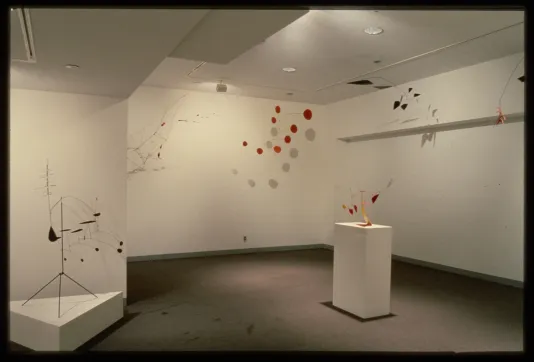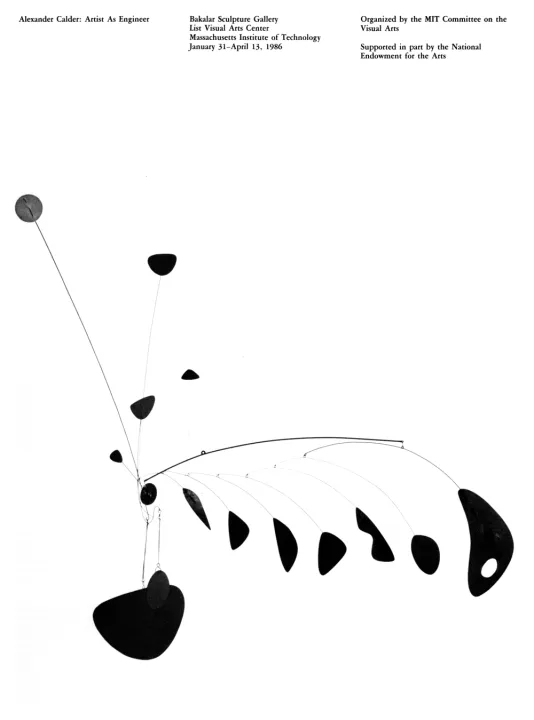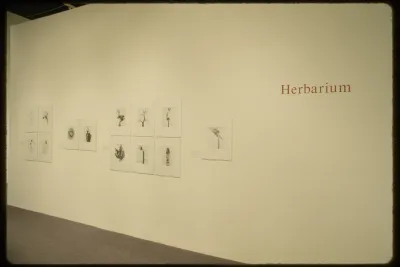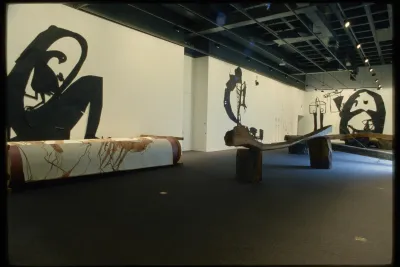Installation view, Alexander Calder: Artist as Engineer, MIT List Visual Arts Center, 1986
Alexander Calder: Artist as Engineer
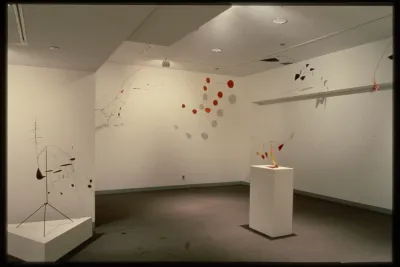
Exhibition exploring the engineering aspects of Calder’s sculpture.
In 1926, Calder moved to Paris, where he began to explore sculpture as well as non-commercial drawing. His miniature circus performers attracted the attention of artists as disparate as Joan Miró and Piet Mondrian. In 1930-31, he was adding motors and movement to his wire sculptures, works dubbed “mobiles” by Marcel Duchamp. By the following year, most of his mobiles were set in motion by air currents alone. Artist Jean Arp dubbed his non-moving sculptures were dubbed “stabiles.” Calder created his Mercury Fountain, a moving work involving a stream of mercury striking a metal plate, for the Paris Exposition Universelle of 1937.
By 1943, he received a solo exhibition at the Museum of Modern Art, New York. From that time, he was widely and regularly exhibited and collected, around the world. His works increased in scale gradually, becoming monumental by the 1950s to 1960s. Posthumously executed and installed, his largest mobile is his untitled work commissioned in 1972 for the central court of the East Building of the National Gallery of Art in Washington, D.C. In 1977, also posthumously, he was awarded the Presidential Medal of Freedom, the highest civilian award granted by the United States. Calder designed most of his works in his studio near Tours, France, his primary residence. He also kept a studio and house in Roxbury, Connecticut. He died in November of 1976, shortly after a retrospective exhibition at the Whitney Museum of American Art, New York.
Publication with essay by guest curator Joan Marter.
